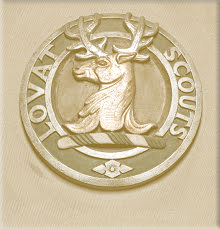Lovat Scouts were disbanded in 1901 except for two companies which were attached to the Imperial Yeomanry, a British volunteer cavalry regiment. On the creation of the Territorial Force in April 1908, these companies were replaced with two regiments of Lovat Scouts Yeomanry, known as 1st and 2nd Lovat Scouts. Both regiments saw extensive involvement in the First World War and served on the Western Front and in Gallipoli, Egypt and Macedonia.
In October 1916, a sharpshooter unit was formed from the ranks of the Lovat Scouts to become the first sniper unit of the British Army. Operating close to enemy positions, they were highly valued for their skills of reconnaissance. The celebrated marksman and adventurer Major Hesketh Vernon Hesketh-Pritchard (1876-1922) is quoted to have said about the Lovat Scouts that ‘if they reported a thing, the thing was as they reported it’.

